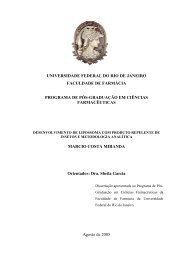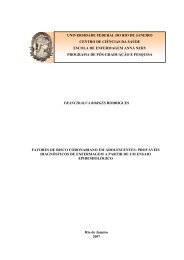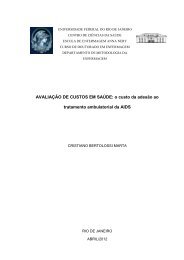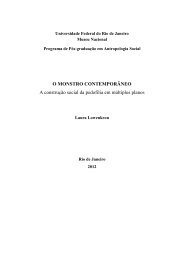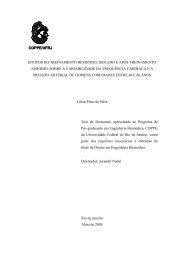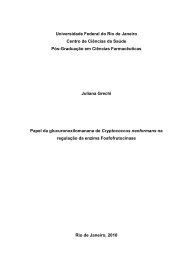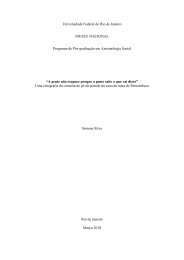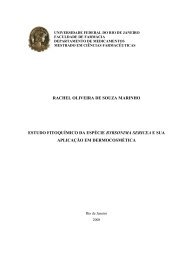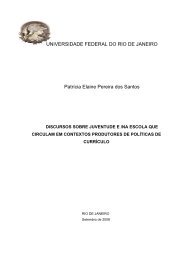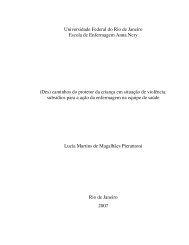Modelo de Hubbard bidimensional: rede hexagonal desordenada e ...
Modelo de Hubbard bidimensional: rede hexagonal desordenada e ...
Modelo de Hubbard bidimensional: rede hexagonal desordenada e ...
You also want an ePaper? Increase the reach of your titles
YUMPU automatically turns print PDFs into web optimized ePapers that Google loves.
Abstract<br />
Two-dimensional <strong>Hubbard</strong> mo<strong>de</strong>l:<br />
Disor<strong>de</strong>red Honeycomb Lattice and Square Lattice With Superlattices<br />
Rubem Mondaini<br />
Advisor: Thereza Cristina Lacerda Paiva<br />
Abstract of Thesis presented to Programa <strong>de</strong> Pós-graduação em Física do Instituto <strong>de</strong> Física da Uni-<br />
versida<strong>de</strong> Fe<strong>de</strong>ral do Rio <strong>de</strong> Janeiro, as a partial fulfillment of the requirements for the <strong>de</strong>gree of Master of<br />
Science – M.Sc. – (Physics).<br />
We study two kinds of two-dimensional systems: structured (superlattices in the square<br />
lattice) and disor<strong>de</strong>red (honeycomb lattice), both in the approach of strongly correlated<br />
fermions. For this, we adopt the <strong>Hubbard</strong> mo<strong>de</strong>l in the grand-canonical ensemble with<br />
the necessary generalizations to simulate each one of these systems. We use the Deter-<br />
minantal Quantum Monte Carlo as the numerical method to obtain the <strong>de</strong>sired physical<br />
quantities. In the superlattice system we set the local electronic interaction U = 0 in cer-<br />
tain layers with the purpose to simulate the non-magnetic layers. The magnetic layers are<br />
simulated by consi<strong>de</strong>ring U = 0. We obtain the behavior of the magnetic or<strong>de</strong>ring as well<br />
as the transport properties like the dc conductivity for the half-filled band and away from<br />
this filling. We also compare the two most used approaches of the Hamiltonian of the<br />
problem. We were able to <strong>de</strong>termine the critical ratio of the number of repulsive layers to<br />
the free ones that separate the insulating and metallic behaviors. In the honeycomb lattice<br />
we simulate the effect of disor<strong>de</strong>r in the local energy levels of each site and observe how



